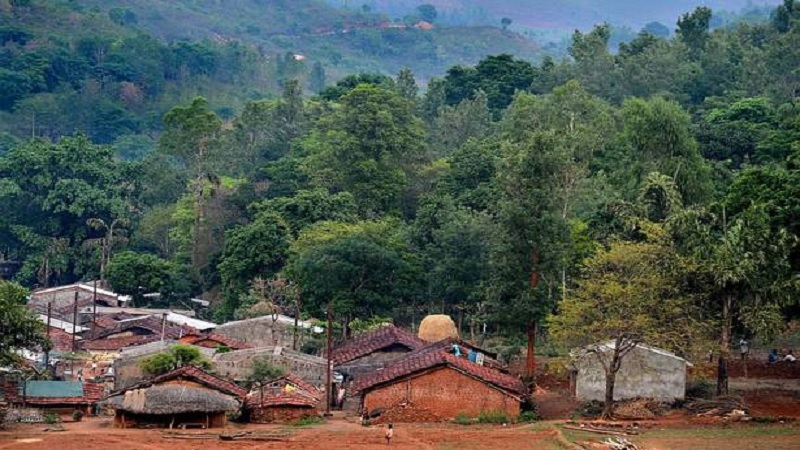
Image Courtesy: thehinducentre.com
Research records maintained by the Ministry of Tribal Affairs (MoTA) show that Assam has in all 524 forest (non-revenue) villages since 1901-02, as discovered by the All India Union of Forest Working People (AIUFWP). The decades-old document also showed how families have been complaining of encroachment issues since the early 1900s – an issue that local activists have protested for decades and even recently.
A research paper titled ‘Problems of Forest Villages in Assam Inhabited by Tribals’ by G. C. Sharma Thakur showcases how forest villages were established during the creation of reserved forests for “having regular work force for the plantation and maintenance of trees of the reserved forests.” The first such village was established in undivided-Assam.
“At present Assam has 524 forest villages within the jurisdiction of the reserved forests covering almost all the present [paper written in 1901-02] districts. Slightly more than three percent of area under reserved forests are in occupation of forest villagers. 47’11 percent of forest villagers belong to scheduled tribes. 233 out of 524 forest villages have more than 50 percent tribal population,” said the paper.
Thakur said that tribals are deprived of many benefits if they lived outside these non-revenue villages. This despite most of indigenous groups living in the forests since before Independence.
Further, encroachment of forest had become an issue for the government and locals alike since 1901. Two landless informants surveyed in the study said they had to earn their livelihood by working in the houses of fellow villagers. Only 10 families at the time said they had 20-30 bighas of land.
Back then, the forest laws did not allow development departments to undertake welfare and development schemes meant for tribals. Villagers were also disallowed from mortgaging land under their possession to financial institutions since “the lands belong to the forest department”.
All this changed over the years, especially after the enactment of the Scheduled Tribes and Other Traditional Forest Dwellers (Recognition of Forest Rights) Act, 2006 wherein the law recognized forests as the inherent property of tribals in the area.
Recently, even the Guwahati court showed support for the spirit of this Act by directing District Deputy Commissioners to take action against forest land encroachers. The court order warned that officers delaying this process will have to pay for imposing costs. Yet, there has been no action by the concerned authority to remove such encroachment.
To ensure that such laws and court orders are properly implemented, local activists led by the Coordination Committee of the Tribal Organizations of Assam (CCTOA) gheraoed (surrounded in protest) the Sonapur Circle Office on June 21, 2022. They demanded that encroachers and illegal industries be evicted from tribal belts and blocks. They also submitted a memorandum to Chief Minister Himanta Biswa Sarma asking the government to halt evictions of tribal people. Instead, it called upon the government to issue land patta to the tribals and to include Mising, Rabha Hasong and Tiwa people under Schedule 6 of the constitution. Other groups like the Takam Mising Porin Kebang (TMPK) also joined the demonstration for the assertion of tribals’ forest rights.
Related:
Evict people encroaching upon tribal land: Assam’s CCTOA
Floods wreak havoc in Assam’s Barak valley
101 die in Assam floods, say ASDMA on Thursday
CJP Assam Team perseveres despite heavy rains, floods and landslides
CJP strengthens commitment to our fellow Indians in Assam in 2021
800 kms, 5 districts: CJP goes the extra mile to locate detention camp inmate’s family